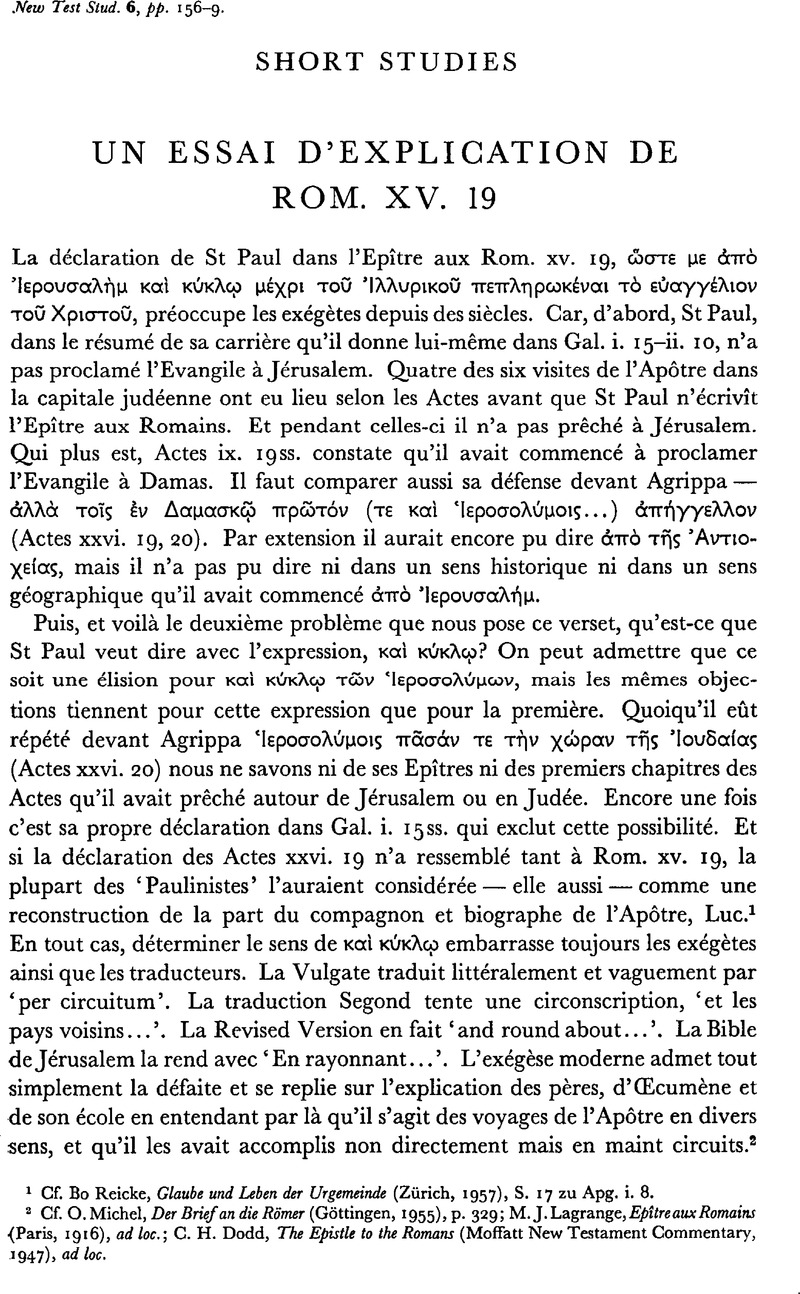Article contents
Un Essai d'Explication de Rom. XV. 19
Published online by Cambridge University Press: 05 February 2009
Abstract

Information
- Type
- Short Studies
- Information
- Copyright
- Copyright © Cambridge University Press 1960
References
1 Cf. Bo, Reicke, Glaube und Leben der Urgemeinde (Zürich, 1957), S. 17 zu Apg. i. 8.Google Scholar
2 Cf. Michel, O., Der Brief an die Römer (Göttingen, 1955), p. 329Google Scholar; Lagrange, M. J., Epître aux Romains (Paris, 1916), ad loc.Google Scholar; Dodd, C. H., The Epistle to the Romans (Moffatt New Testament Commentary, 1947), ad loc.Google Scholar
1 Der Brief an die Römer (Leipzig, 1910), ad loc.Google Scholar
2 Michel, O., op. cit. p. 329.Google Scholar
3 Les Epîtres Pastorales (Paris, 1947). A propos de II Tim. iv. 10.Google Scholar
4 Cf. I Cor. ix. 1–16; II Cor. x. 17; xi. 5–12; Th. Wb. III, 648ff.
5 Cf. I Cor. ix. 14–15; II Cor. i. 8–12; v. 12ss.; vii. 4–5; Gal. vi. 14–17.
6 Cf. I Cor. iii. 21–2; xv. 7ss.; II Cor. X. 8–12, 15–18; xi. 5–12; Phil. iii. 4ss. Une recherche profonde de καúχησıς et de καúχημα dans le N.T. peut bien les signaler comme une véritable ‘Gattung’ du style paulinien.
1 Cf. Cullmann, O., Pierre, Disciple, Apôtre, Martyr (Paris, 1952).Google Scholar
2 Cf. Luc xxiv. 47–9; Actes i. 8; Jean xviii. 1.
3 Cf. Luc xxiv. 47, Actes i. 8. Jean ne le dit pas en autant de mots mail it le suppose pourtant.
4 Actes i. 8; Luc xxiv. 49b.
5 Luc xxiv. 29; Actes i. 8; Matt. xvii. 18 (cf. θ syP!).
6 Matt. xvi. 17 ss.; Luc xxiv. 49 ss.; Actes i. 8; Jean xx. 21 SS. et xvii. 20.
- 1
- Cited by

